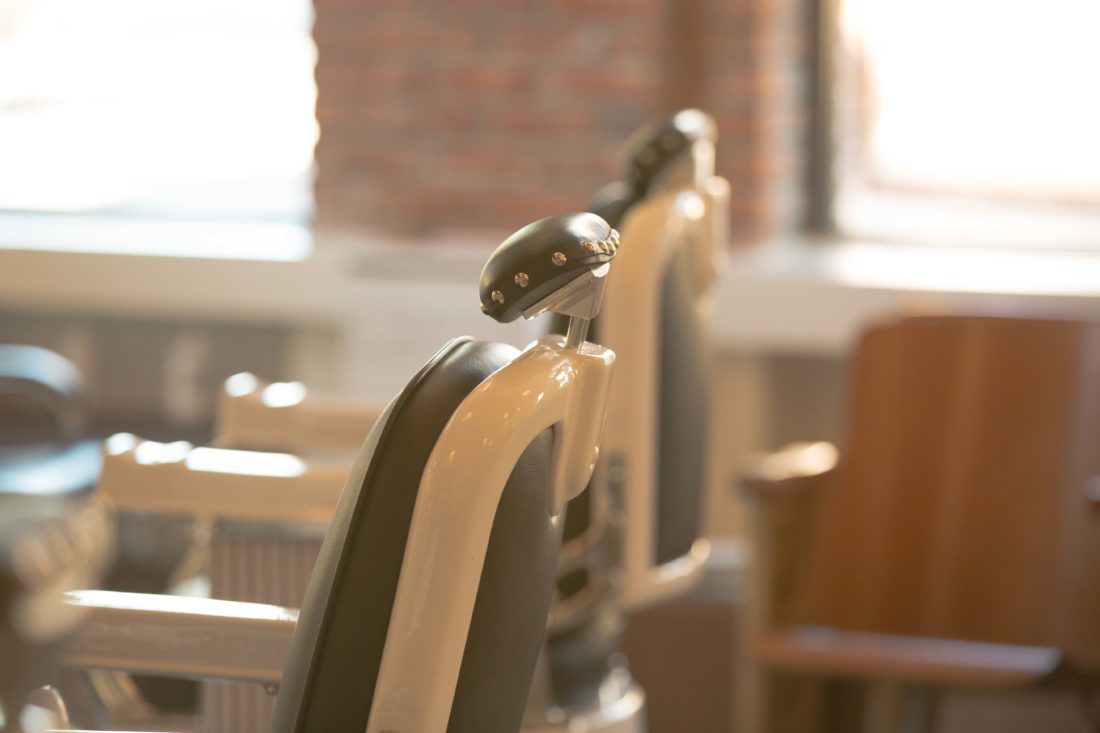
History of Hair Restoration
Few things are worse for a man, than facing that you might be going bald. Rather than “age gracefully” (and risk looking like Curly from the Three Stooges), some men opt for various methods to regenerate hair.
We spoke to Chicago-based trichologist Karen Gordon for a rundown on what’s out there, to regrow Hair.
Platelet-Rich-Plasma (PRP) – A non-surgical procedure in which blood is drawn then spun in a centrifuge to separate the white blood cells, the red blood cells, the platelets and the plasma. The platelet rich plasma is then injected into areas of the scalp where hair is thin to stimulate cellular growth. “It can be quite helpful, depending on the cause of thinning hair/hair loss,” Gordon said. All PRP’s are not created equal. Be careful when researching doctors. Some of the best doctors use additives that can boost the rate of effectiveness.
Low Level Light Therapy – Commonly recommended by hair loss practitioners to energize hair follicles and promote new growth. LLLT is often done as part of ongoing treatments in a clinical setting. However, today there are many at-home options, such as laser wands, bands, combs and caps.
Supplements – Hair growth supplements are quite popular today. A good multi-vitamin is often recommended just to make sure you meet all of your daily requirements- especially one that contains a mixture of Vitamins B, C, D , thiamine, zinc and magnesium. But for hair loss, said Gordon, Biotin (a Vitamin B component) is often recommended, as it is believed that it boosts the metabolism of fats, carbs and proteins that help nourish the hair.
Pharmaceutical options – Many men and women try using Rogaine to regrow hair, and it can be found over the counter. Rogaine is a brand name for Minoxidil, which was originally a hypertension drug. How it works is still somewhat uncertain, but in cases of hereditary hair loss, it is thought to open potassium channels and widen blood vessels, allowing more oxygen, blood and nutrients to flow to the hair follicles, thus reviving inactive follicles and lengthening the time that hair is in the active growth phase. This creates more hairs on the head at any given time, and longer thicker ones too! Minoxidil is a topical, with most people opting for the foam version. There are enhanced versions of Minoxidil (82M) that are made at a compounding pharmacy and can be prescribed by hair loss doctors. Formula 82M contains Minoxidil and Retinoic Acid for enhanced penetration of the product and a sophisticated blend of anti-inflammatory, antioxidant, anti-androgen and other ingredients in a non-irritating propylene glycol-free base.
Another pharmaceutical option is Propecia or Proscar, the brand names for Finasteride. Finasteride was originally used to treat men with enlarged prostates. Surprisingly, many men found it helped them grow hair. Finasteride works by reducing levels of DHT (dihydrotestosterone). Sensitivity to DHT is often a cause of hair loss. Finasteride must be prescribed by a physician. It can have several side effects that are important to discuss with your doctor, including sexual dysfunction. It is recommended that women who are pregnant, trying to get pregnant, or who could get pregnant, do not take Finasteride.
FUE/Hair Transplants – Also known as Follicular Unit Extraction is a state of the art method for transplanting hair, which is done with great expertise at the Barber Surgeons Guild. With FUE, a robot removes individual hairs/follicular units from a donor area on the patient’s scalp, and then transplants them to an area where there is thinning. Great precision and artistry is involved and results can look completely natural, especially along the hairline. In the past, a strip of skin was often removed from a patient’s head to harvest follicles. This left a telltale scar. FUE can be used to replace eyebrows and eyelashes as well.
Scalp Micropigmentation – A scalp tattoo that is applied at the epidermal level of the skin. Little tiny lines that resemble individual hair are tattooed onto the scalp, replicating the look of a few days of outgrowth. It is good alternative for men with hair loss who would otherwise shave their heads. It can also be used to fill in areas where there is still hair, but the scalp is showing through, for both men and women.
First and foremost, in order to grow healthy hair you have to have a healthy scalp. If the follicles are blocked by oil or scaly skin, the hair can grow in miniaturized, or not at all. So getting the scalp balanced is imperative. Second- If DHT is your problem (as is often the case in hereditary, androgenetic hair loss) some products have ingredients that are DHT inhibitors, such as Saw Palmetto. And some products have ingredients that stimulate blood flow to the scalp. Others have astringent qualities to treat excessive oil. Using the proper shampoos, conditioners and treatments should be incorporated into a comprehensive plan when addressing thinning hair/hair loss.
Karen Gordon is the owner of J. Gordon Designs and Karen Gordon Hair Loss Solutions in Chicago. Is he is a licensed hairdresser for 40 years and a Bauman Certified Hair Coach. She is a member of the American Hair Loss Council and is on the Board of Directors of the International Association of Trichologists (IAT) and the Advisory Board for the Hair+ Summit. She speaks at major industry trade shows, teaching salon professionals about the business hair loss. She is also on the Board of Directors of Intercoiffure America/Canada and serves as the Vice-President of Cosmetologists Chicago/America’s Beauty Show.
Along with being a hair color specialist, Karen has opened a clinic within her salon for clients with thinning hair and hair loss challenges.
To book an appointment with a BSG consultant please check here.
